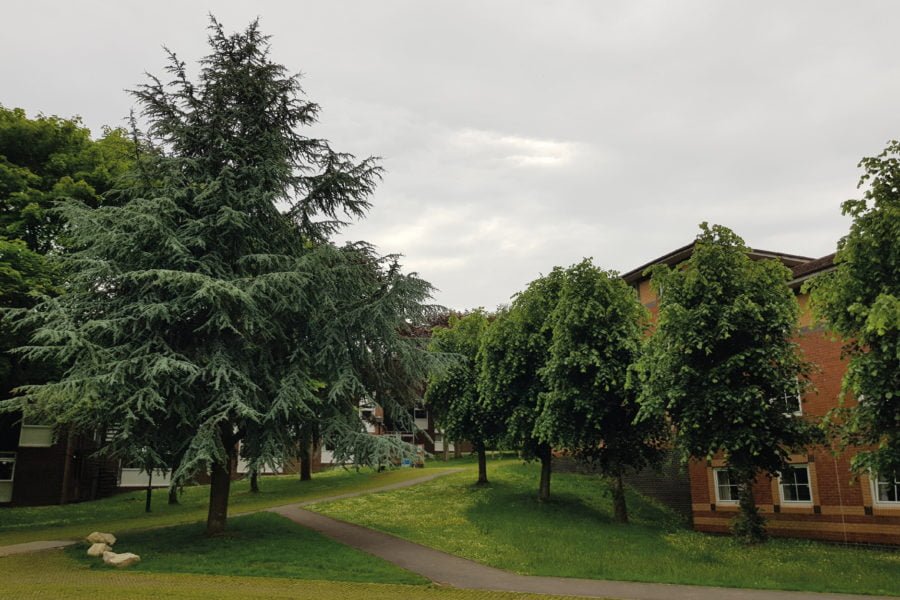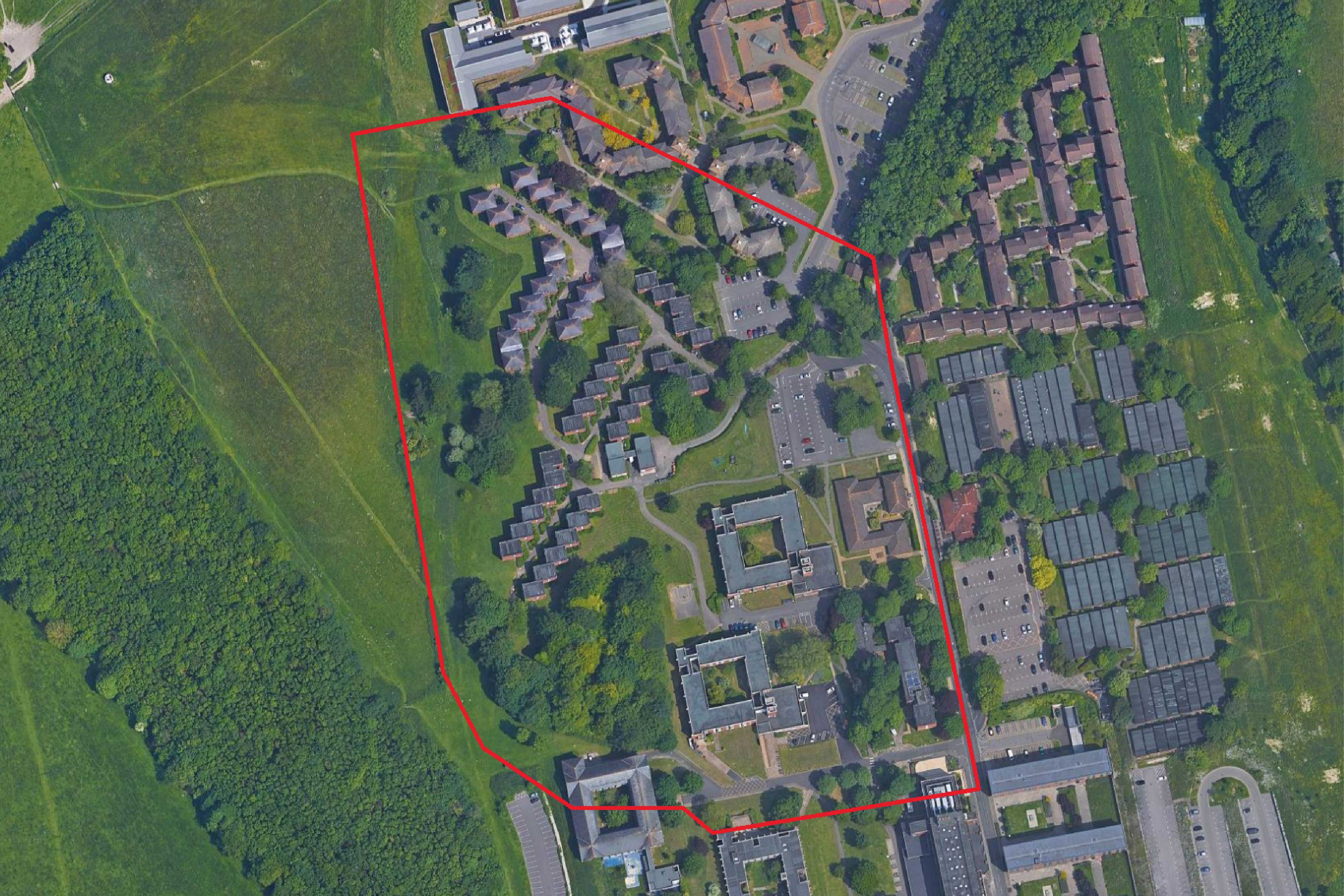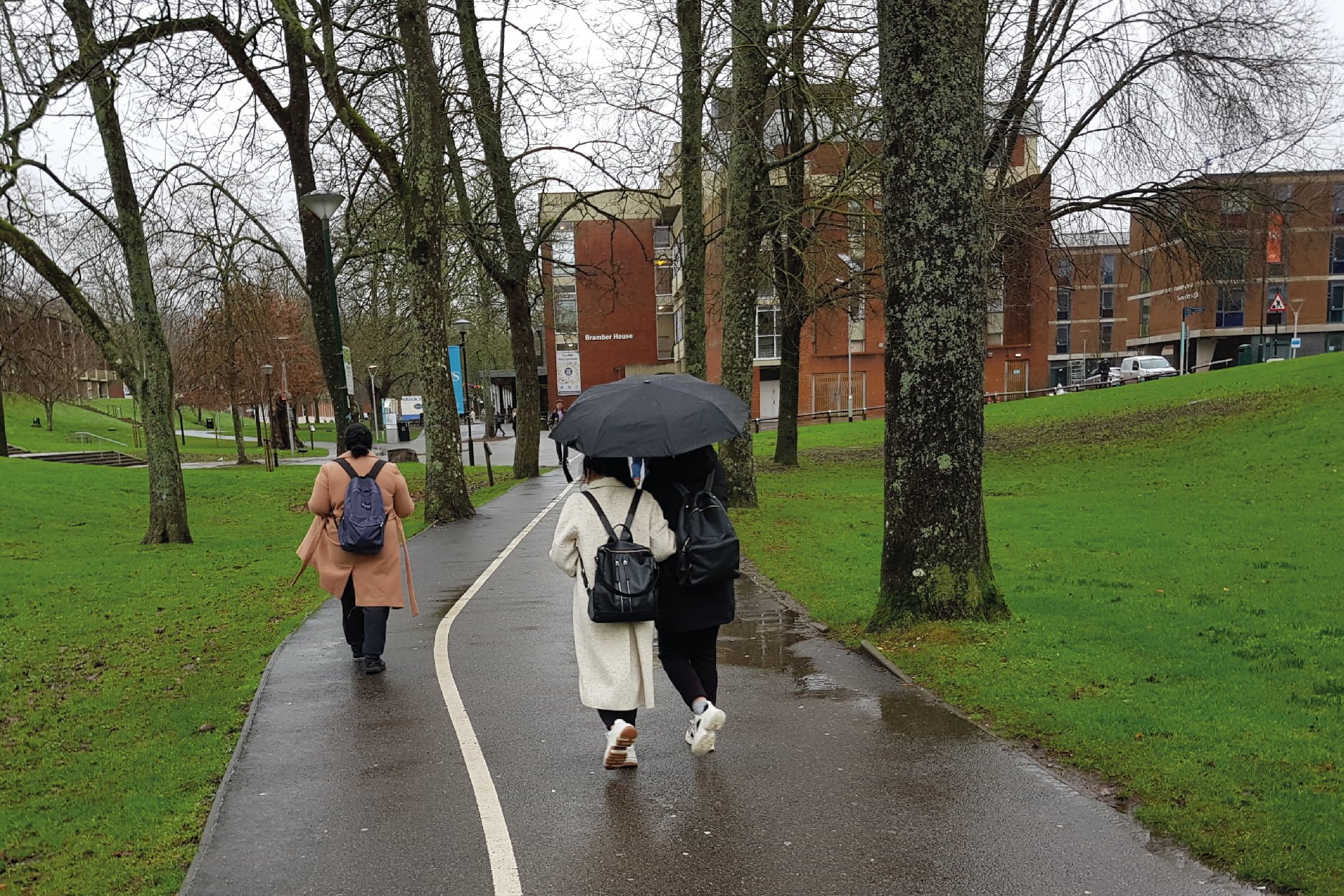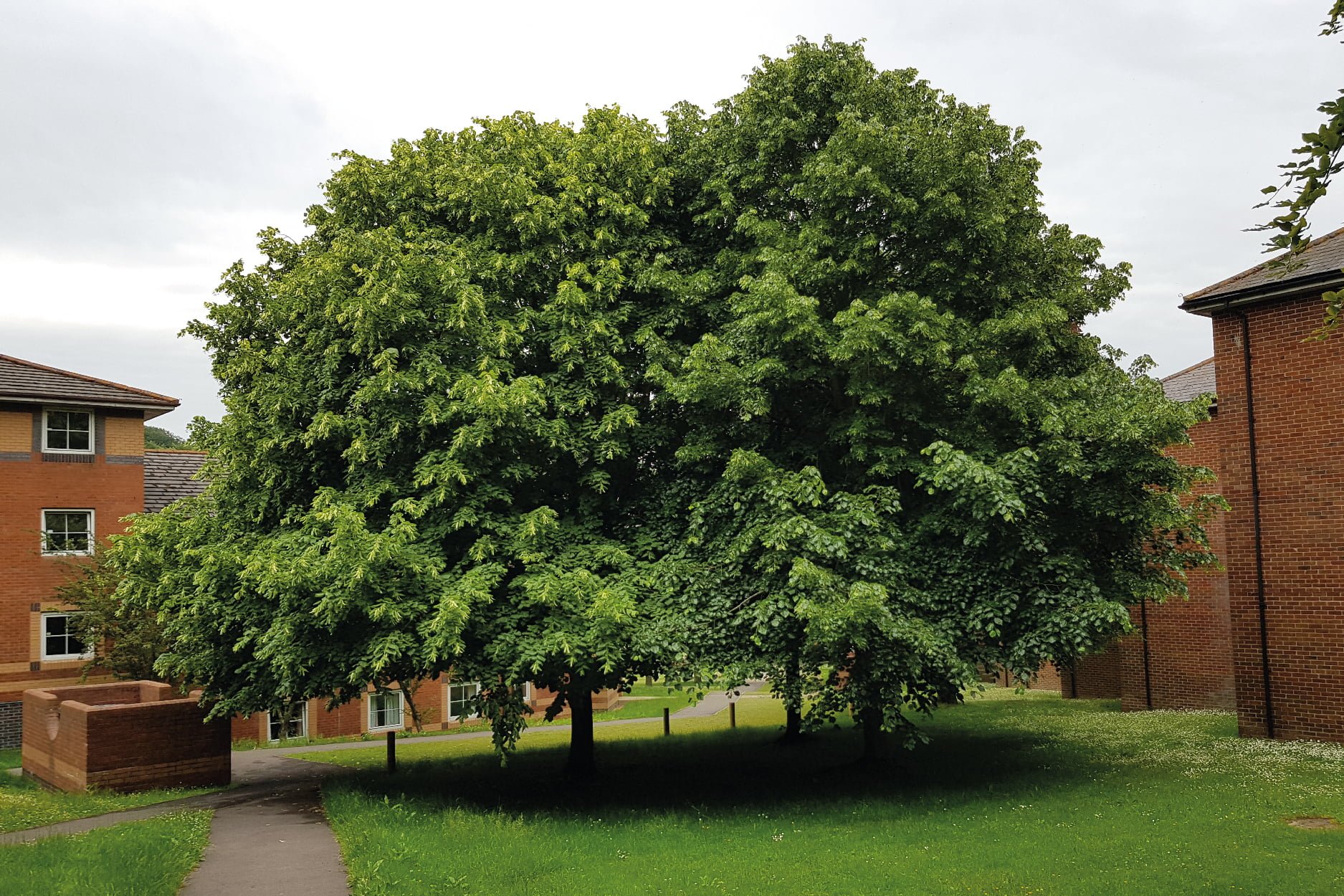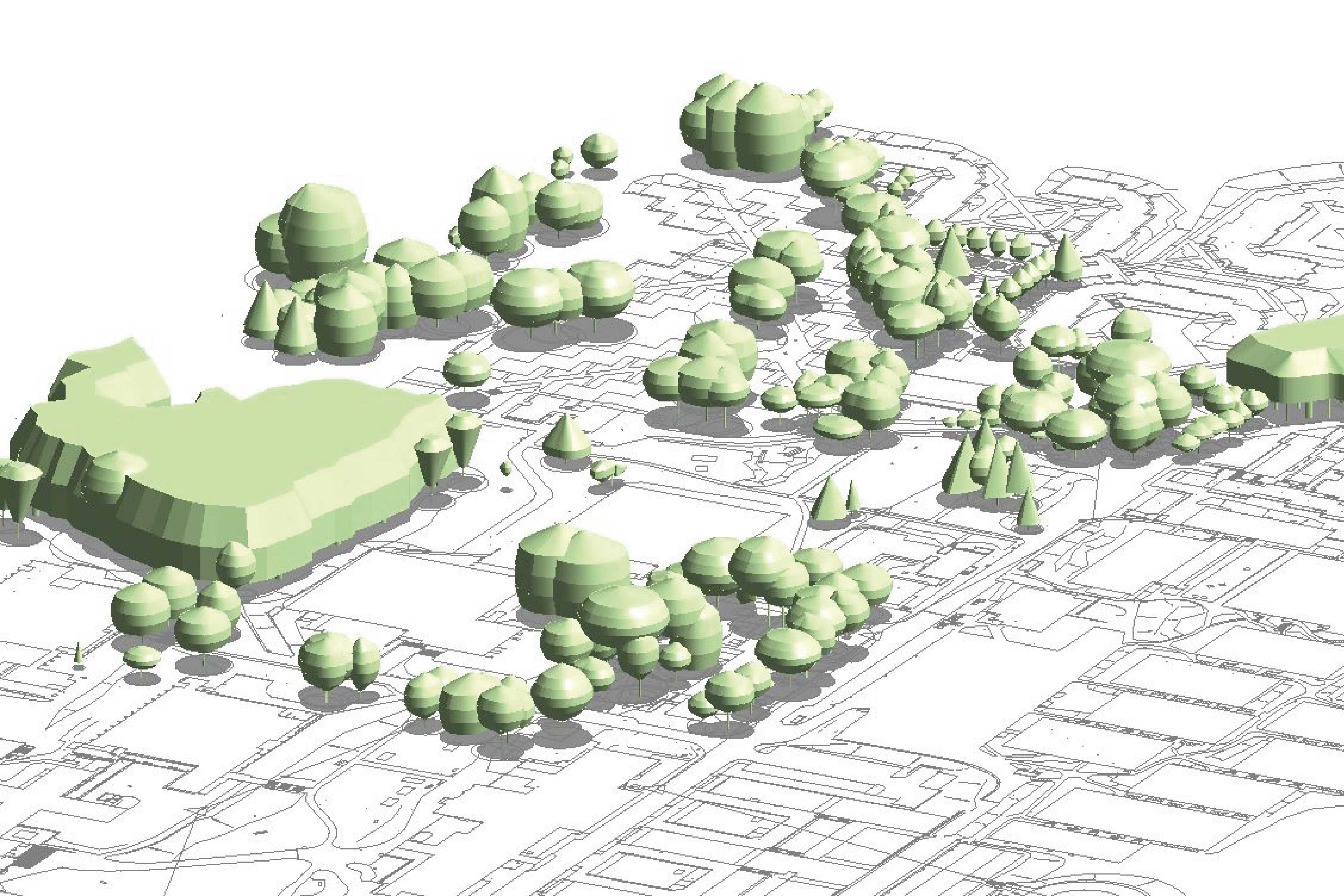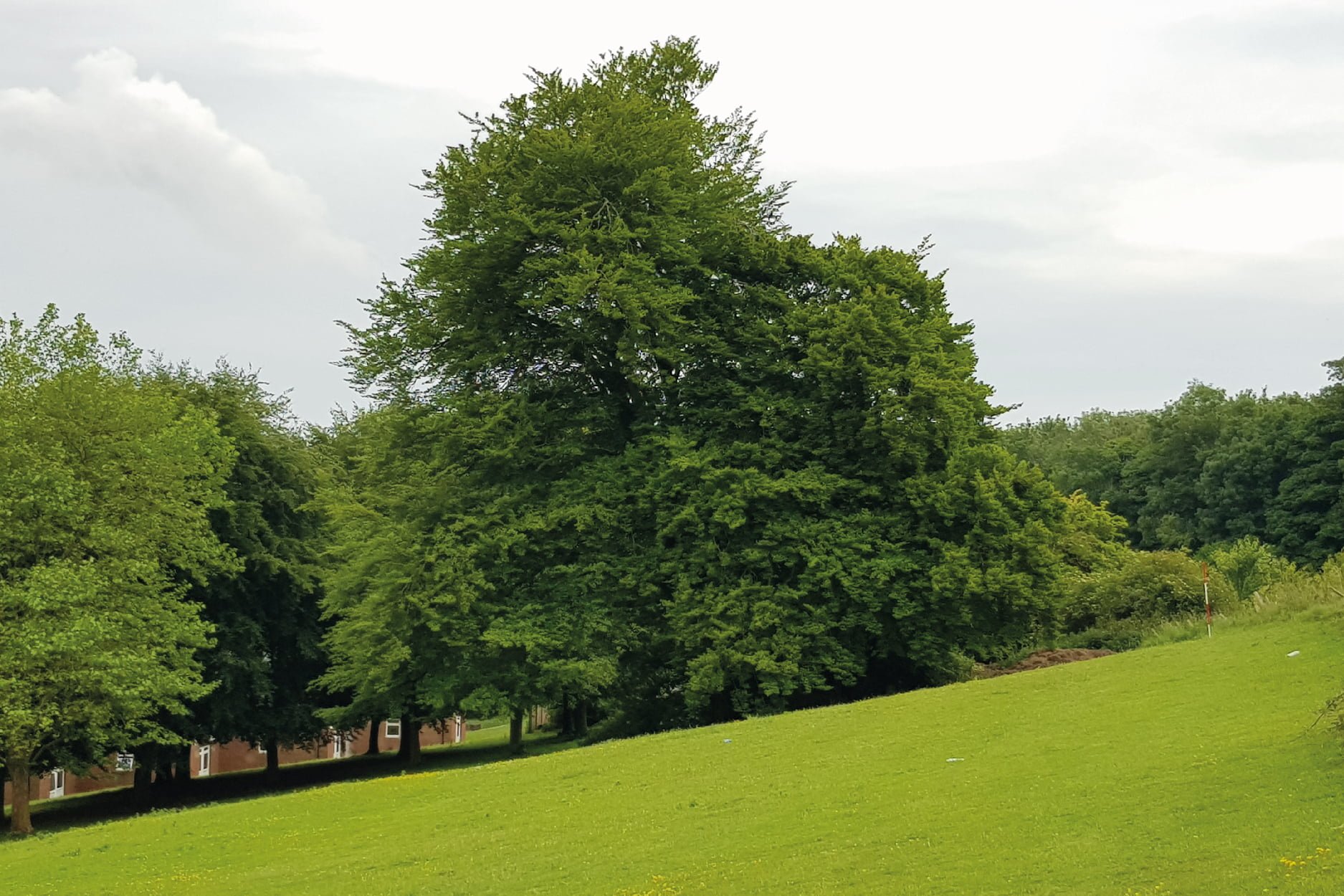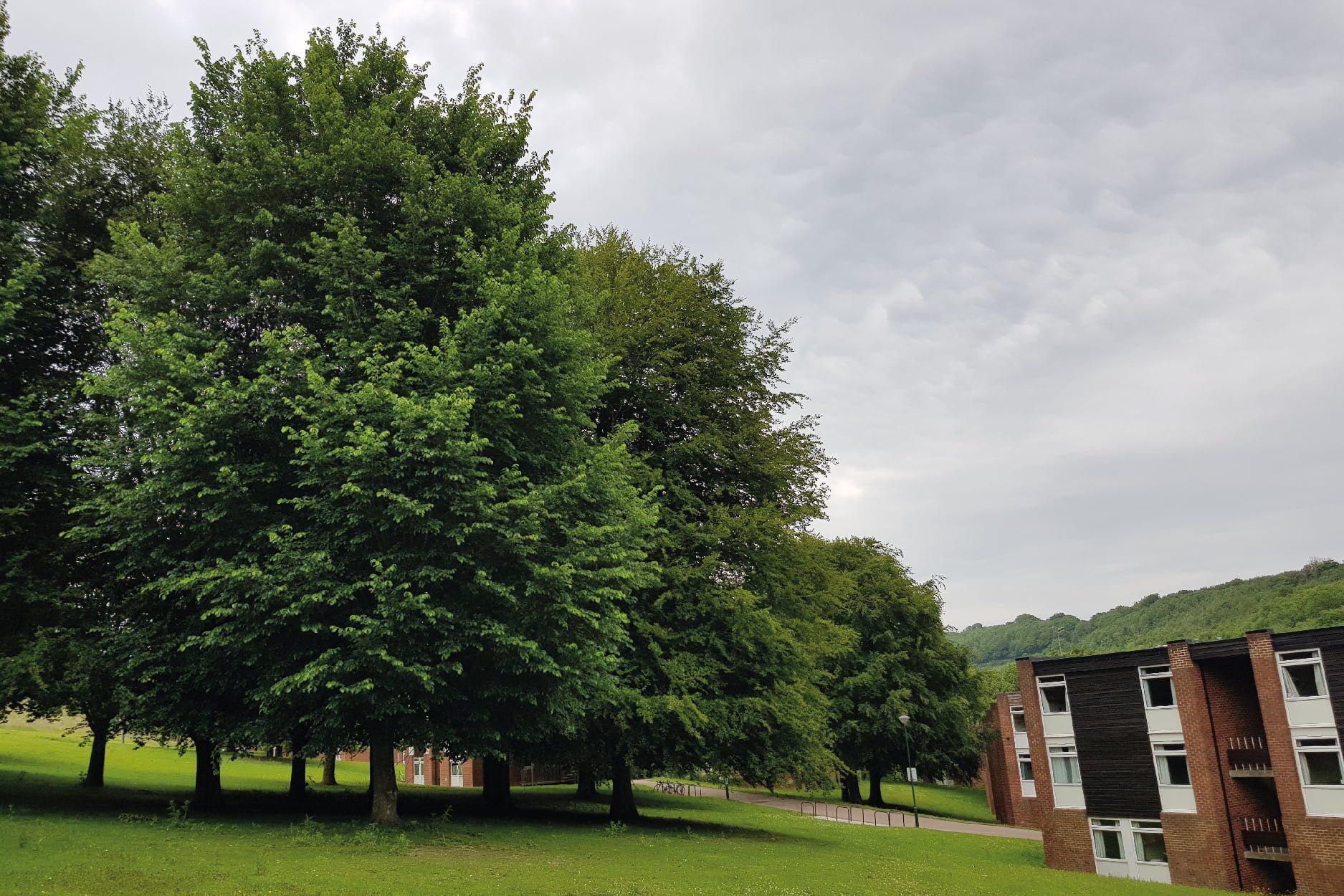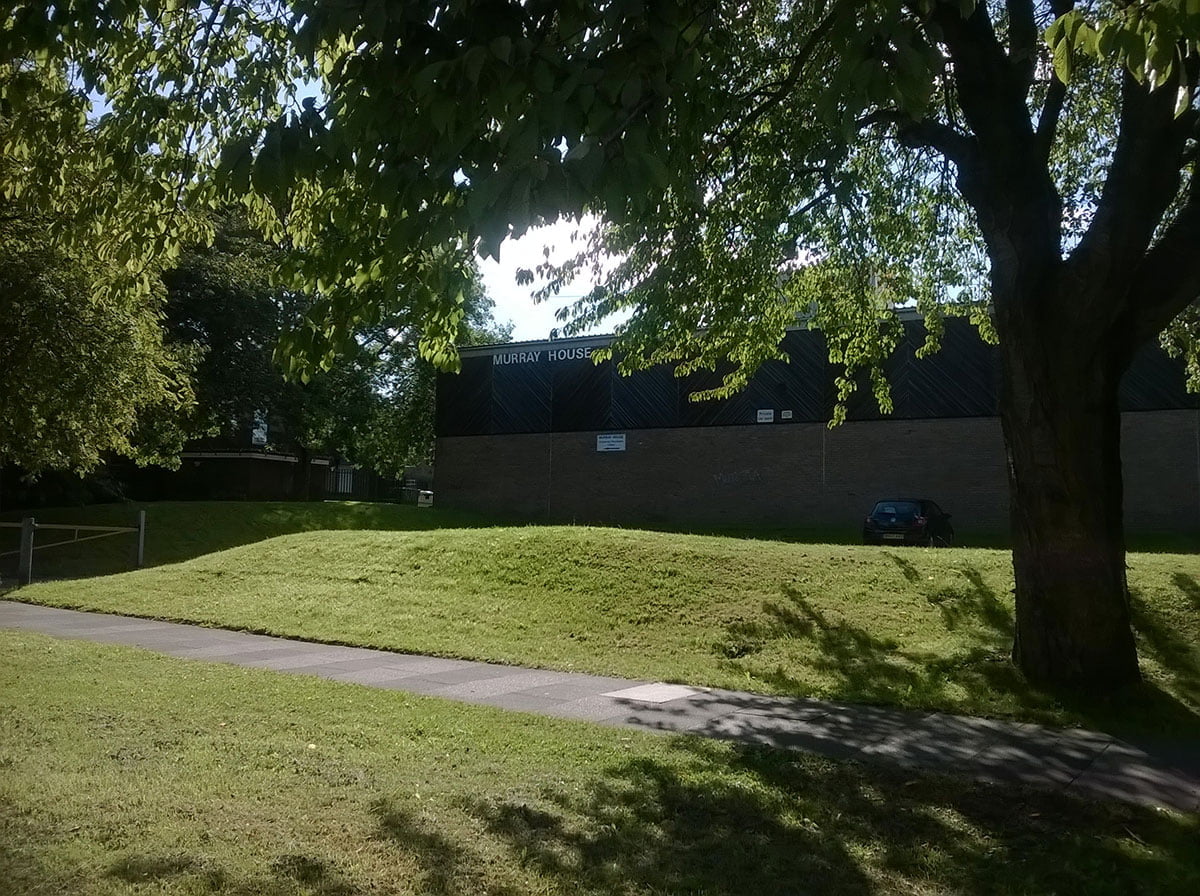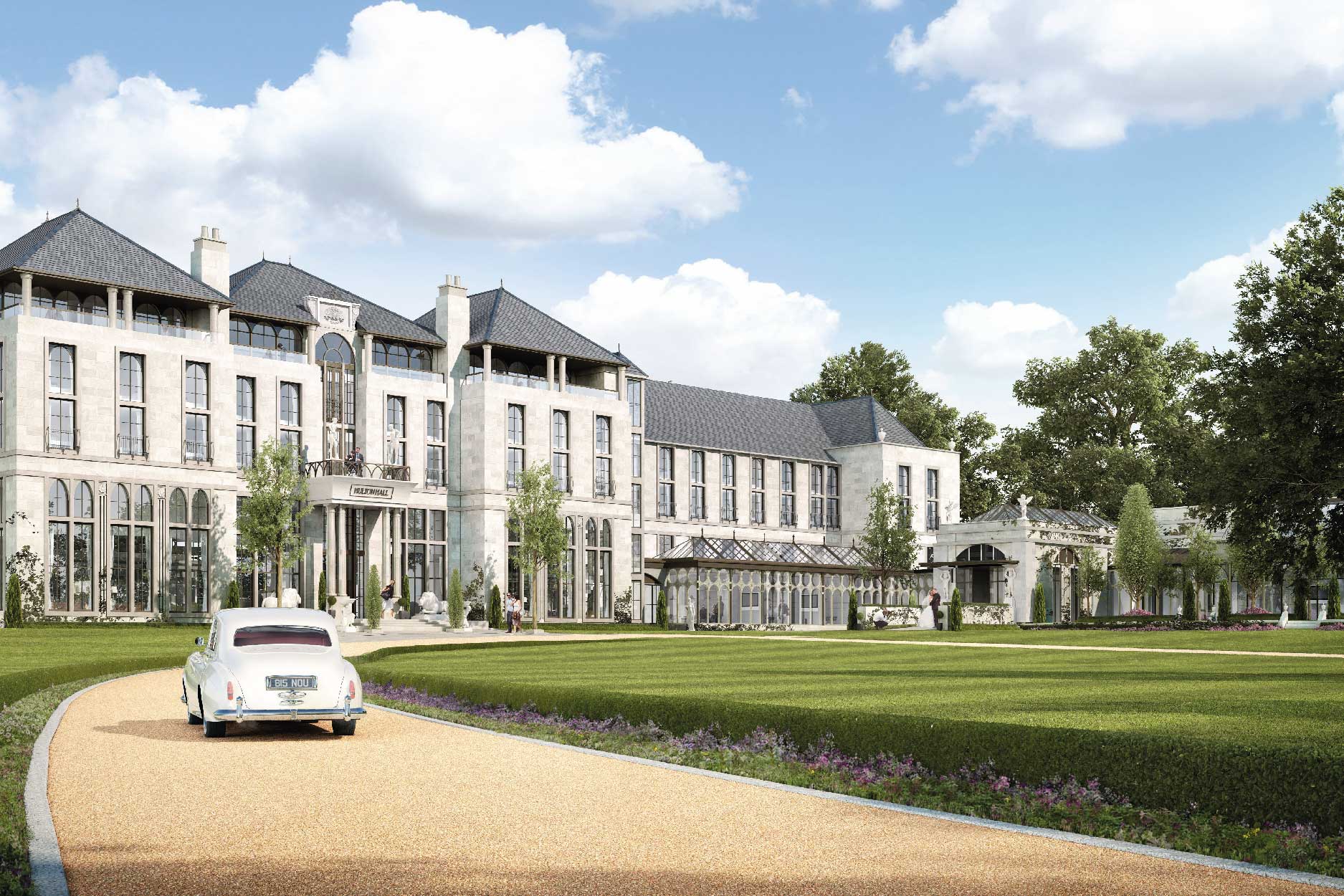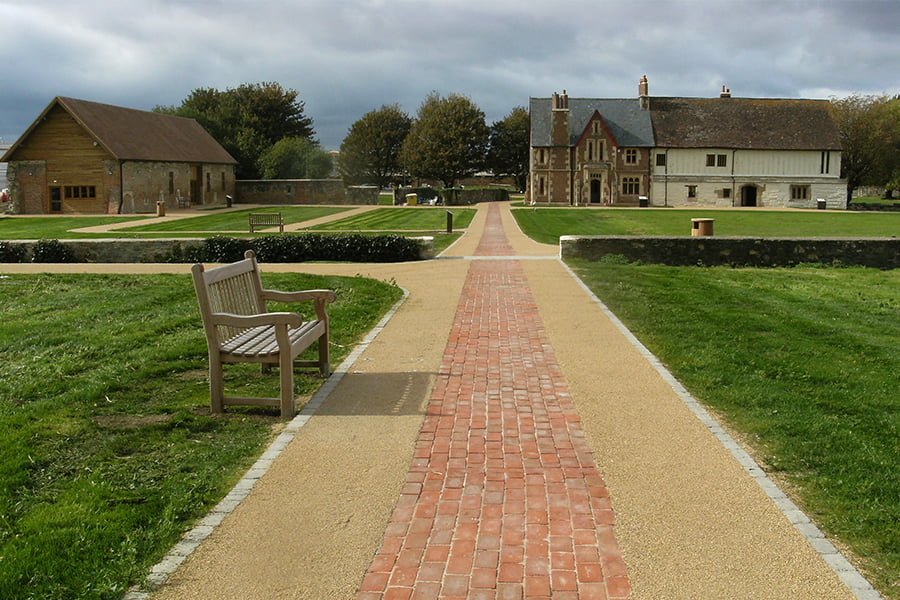TEP provided arboricultural services, including a 3D tree model, to the University for its West Slope development which will provide 1,900 new student rooms at the Falmer Campus, just outside Brighton.
The scheme is part of the continuing evolution of the campus to improve the University’s facilities, to ensure the best possible student experience, and continue the legacy of Sir Basil Spence.
Sir Basil Spence worked collaboratively with landscape architect Dame Sylvia Crow on the original campus, which focussed on capturing the natural landscape of the South Downs chalk valley. The landscape of the campus was described by Spence as growing “out of the soil of Sussex to become a natural part of this beautiful site.”
The University of Sussex campus sits within a valley of the South Downs National Park and is bound on all sides by a variety of nature conservation sites and areas of ancient woodland. The designs, by Fielden Clegg Bradley and Grant Associates, were developed to minimise excavation, retain as many trees as possible and respond to the contours of the site.
TEP was commissioned to undertake an initial arboricultural appraisal in 2019. The culmination was the production of an Arboricultural Impact Assessment and Method Statement.
The site contains many mature trees and a challenging site-level profile, which needed careful consideration as part of the design process. Therefore, in addition to the conventional 2D CAD plans mapping existing trees, TEP also modelled the treescape in 3D using Revit, which fed into the wider project Building Information Modelling (BIM) process. This allows enhanced visualisation of how existing trees will interact with proposed buildings and infrastructure, a process that has proved invaluable in ensuring the oldest beech trees on the West Slope and all of the existing woodland can be appropriately incorporated into the scheme.
Our input into the planning application helped secure unanimous approval for the project, as well as protecting the valuable trees within the site.


